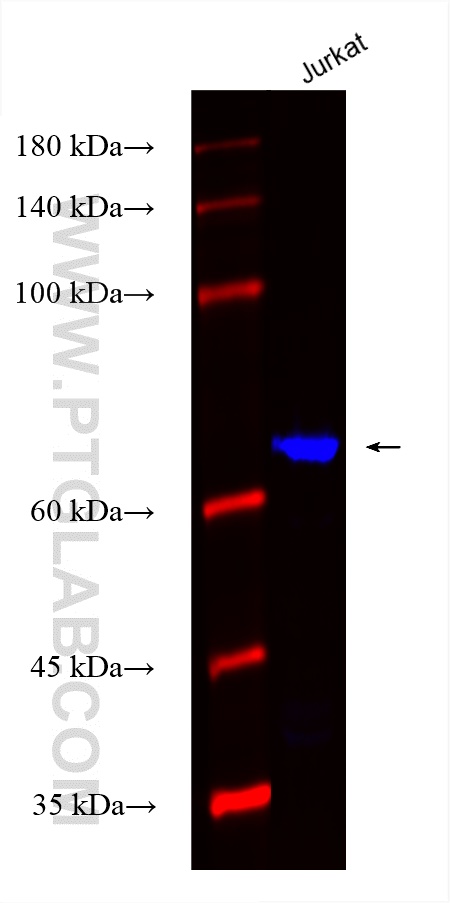验证数据展示
经过测试的应用
| Positive WB detected in | Jurkat cells |
推荐稀释比
| 应用 | 推荐稀释比 |
|---|---|
| Western Blot (WB) | WB : 1:1000-1:4000 |
| It is recommended that this reagent should be titrated in each testing system to obtain optimal results. | |
| Sample-dependent, Check data in validation data gallery. | |
产品信息
CL750-82967 targets ACAP1 in WB applications and shows reactivity with human samples.
| 经测试应用 | WB Application Description |
| 经测试反应性 | human |
| 免疫原 |
CatNo: Ag34309 Product name: Recombinant human ACAP1 protein Source: e coli.-derived, PGEX-4T Tag: GST Domain: 163-270 aa of BC018543 Sequence: RAGYRGRALDYALQINVIEDKRKFDIMEFVLRLVEAQATHFQQGHEELSRLSQYRKELGAQLHQLVLNSAREKRDMEQRHVLLKQKELGGEEPEPSLREGPGGLVMEG 种属同源性预测 |
| 宿主/亚型 | Rabbit / IgG |
| 抗体类别 | Recombinant |
| 产品类型 | Antibody |
| 全称 | ArfGAP with coiled-coil, ankyrin repeat and PH domains 1 |
| 别名 | 230370E1, Arf-GAP with coiled-coil, ANK repeat and PH domain-containing protein 1, Centaurin beta 1, Centaurin-beta-1, CENTB1 |
| 计算分子量 | 740 aa, 82 kDa |
| 观测分子量 | 82-85 kDa |
| GenBank蛋白编号 | BC018543 |
| 基因名称 | ACAP1 |
| Gene ID (NCBI) | 9744 |
| RRID | AB_3673755 |
| 偶联类型 | CoraLite® Plus 750 Fluorescent Dye |
| 最大激发/发射波长 | 755 nm / 780 nm |
| 形式 | Liquid |
| 纯化方式 | Protein A purification |
| UNIPROT ID | Q15027 |
| 储存缓冲液 | PBS with 50% glycerol, 0.05% Proclin300, 0.5% BSA, pH 7.3. |
| 储存条件 | Store at -20°C. Avoid exposure to light. Stable for one year after shipment. Aliquoting is unnecessary for -20oC storage. |
背景介绍
ACAP1, also named as Centaurin-beta-1, is a 740 amino acid protein, which is expressed Highly in lung and spleen. ACAP1 as a GTPase-activating protein (GAP) for ADP ribosylation factor 6 (ARF6) is required for clathrin-dependent export of proteins from recycling endosomes to trans-Golgi network and cell surface and required for regulated export of ITGB1 from recycling endosomes to the cell surface and ITGB1-dependent cell migration.
实验方案
| Product Specific Protocols | |
|---|---|
| WB protocol for CL Plus 750 ACAP1 antibody CL750-82967 | Download protocol |
| Standard Protocols | |
|---|---|
| Click here to view our Standard Protocols |


